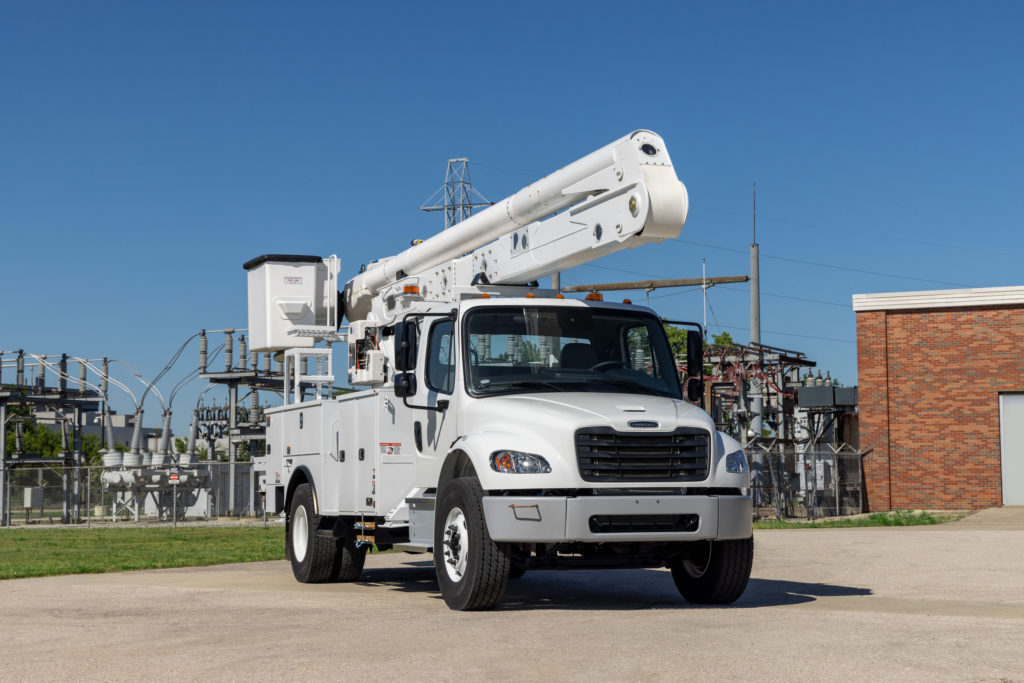Believe it or not, that tractor-trailer you just passed on the highway probably wasn’t assembled by the manufacturer called out by the grille emblem, at least not entirely. A company called Fontaine Modification may have played a huge role in building that big-rig, and plenty of other heavy trucks on the road today.
According to their website, Fontaine Modification provides “post-production truck services for original equipment manufacturers, dealers, and fleets,” meaning they help partners build trucks needed for specific tasks. Fontaine Modification is part of Marmon Holdings, which is owned by Berkshire Hathaway, the multinational conglomerate famously headed up by billionaire investor Warren Buffett.
SEE ALSO: 2023 GMC Hummer EV pickup review: Breaking all the rules
Currently, Fontaine has 10 production facilities in the U.S., each one located close to major truck manufacturers’ plants. This proximity minimizes shipping distances and time, allowing them to easily and cost effectively upfit vehicles in a process called multi-stage manufacturing. Fontaine can install auxiliary power units, special decals, additional camera systems, power take-offs and other equipment. “We’re certified by the OEMs to do all that work,” explained Dave Brosky, vice president of sales and business development at Fontaine Modification while speaking with EV Pulse.

But why do so many truck makers opt to have a separate company finish building their vehicles? According Brosky, it’s extremely difficult for vehicle manufacturers like Ford or Freightliner, Kenworth, Mack, Peterbilt or Volvo to build all the wildly different truck configurations needed by customers. Garbage haulers, for instance, may need rigs with two driving positions, something a tree trimming company would never want. Certain firms might require trucks with electric power take offs to run other equipment, and still other companies could need hook lifts or rollback beds. This complexity is difficult for OEMs to manage in their factories, which is where partners like Fontaine come into play.
Aside from installing job-specific equipment, Brosky said they’re also well positioned to help advance vehicle electrification in the heavy-truck space. He explained they’ve done alternative fuel upfits (CNG) for many years and increasingly, they’re adding electric drivetrains to heavy trucks. Over the last two and a half years Brosky explained, “In terms of quantity, we’ve built over 300 units.” Aside from all-electric trucks, Fontaine also installs hybrid powertrains and is increasing the amount of work it does with fuel cells.
Growth is a little slow, and for things like batteries and computer chips, “There’s still a supply chain constraint in the market,” noted Brosky, but going forward, “The market looks pretty promising in terms of commercial vehicles electrifying.” In fact, the way things are going, he predicts that by the year 2040, 50% of Class 4 to Class 8 trucks will be electric.

Aside from battery-powered drivetrains, there are lots of other things that can be done to electrify commercial vehicles to improve efficiency. Trucks that deliver fresh food to grocery stores can be equipped with electrically powered refrigeration units that are far more efficient than ones driven by conventional generators. Idle-reduction systems can be added to school buses or similar vehicles to cut diesel fuel consumption. “It’s not a full electric,” admitted Brosky but, “It’s also not $300,000.” Huge leaps in efficiency can be made without the need to install tons of battery pack or spend hundreds of thousands of dollars.
CHECK THIS OUT: The best home EV chargers
Fontaine Modification can also help companies go electric by swapping out vehicle drivetrains. “We are starting to look at, especially with electrification, repowering. So, taking existing vehicles and turning them from gasoline or diesel power to be electric,” noted Brosky. There are lots of legacy vehicles on the road today that could be retrofitted with batteries and motors instead of a diesel engine. Repowering is something they can do from Class 4 to Class 8 trucks.
Currently, four of Fontaine Modification’s manufacturing facilities handle vehicle electrification, though Brosky added an additional two will come online this year. Eventually, all 10 will likely be able to build electric or electrified heavy trucks. “It’s really (about) satisfying the needs of end customers,” he said.

